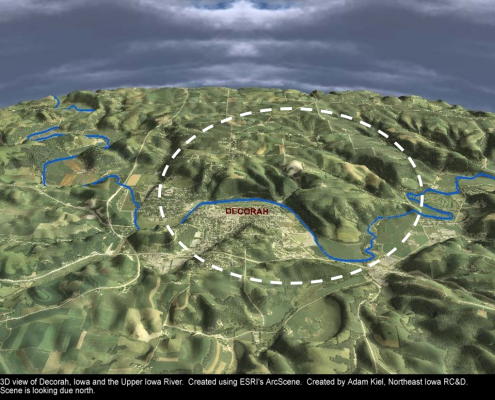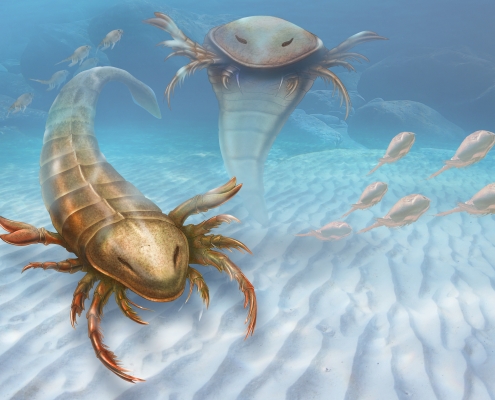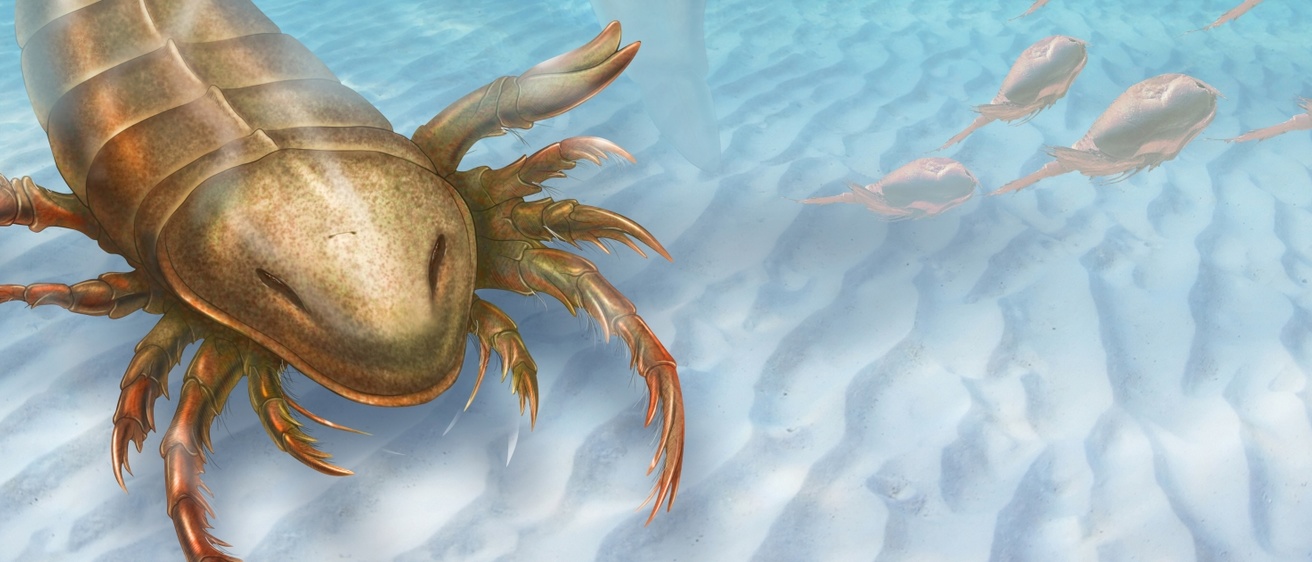IGS paleontologists study the fossils of Iowa. They use these fossils to better understand the history of the Earth. Iowa’s various types of fossils allow IGS paleontologists to study ecologies, evolutionary events, and even the climate of the past.
The Winnieshiek Project

Sponsor: National Science Foundation
Background: The Middle Ordovician Winneshiek Lagerstätte, discovered by the IGS in Decorah, is characterized by many well-preserved fossils, including some soft body and tissues. The fossil component indicates that the Winneshiek fauna lived in a special marine environment, and was dominated by many rare non-shelly taxa including the earliest eurypterid.
Goals: Excavate, classify, and understand the fossils found in the Winneshiek Lagerstätte
IGS Strategies: IGS geologist H. Paul Liu (retired) led an effort to erect a temporary dam to divert the Upper Iowa River so they could excavate the only outcrop of the Winneshiek Shale. They brought 2-1/2 tons of shale back to the University of Iowa for analysis. They found more than 5,000 fossils—many unknown to scientists until now—in the slabs of shale.

One of the most dramatic finds was the Pentecopterus, a giant sea scorpion named for an ancient Greek warship, the Penteconter—likely the first true ship of war. The sea scorpion, the earliest and largest such animal of that period, mimicked the ship’s long sleek lines and sported a long head shield, a narrow curving body, and huge scary claw-like limbs that could easily trap the creature’s unfortunate prey. The Pentecopterus’ modern relatives include spiders, lobsters, and ticks. Imagine a six-foot tick.
Working with colleagues at Yale University, Liu has been able to form a picture of how this predator looked and what its life was like in the shallow and likely brackish waters that covered Northeast Iowa millions of years ago.
Contact Us

Alyssa Bancroft
Bedrock Geology and Paleontology
PhD, The Ohio State University
319-467-4318
alyssa-bancroft@uiowa.edu
